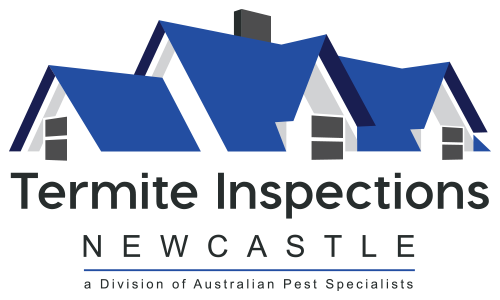As a home owner we can discourage termites from entering our homes.
- Termites are attracted to wood and timber products so it essential that you remove any potential termite food sources away from your home.
- Termites require moisture for survival, so it is essential to fix leaking water pipes, drains, showers, sinks etc, plus remember the water from air conditioning units, water storage tanks and hot water over flow pipes these must be directed away from the home into a drain.
- Termites prefer humid conditions, so keep air under the house, keep the sub floor region dry by improving ventilation ,keeping vents free from soil and pathway elevation levels , installing extra vents where needed, keeping them above path level so that it doesn’t allow moisture to enter through the vents when it rains.
- Timber decay for example wood rot(damp decaying timbers) must be rectified on the property repair timbers damaged by moisture as termites are attracted to decaying timbers increasing the risk of termite attack to the property.
- Regular inspections are essential and should be integrated as part of a termite control program ,inspections should be carried out at least annually and in areas of high risk ie. damp areas, areas surrounded by trees Especially Eucalyptus trees.
- Keep the edges of the house around the slab ,piers and foundations free from soil levels, rubbish, stored goods, clutter, vegetation and garden beds as it can allow termites.
- Remove all rubbish and debris especially timber products in a sub-floor region as seen in the photograph above ,having rubbish especially cellulose based products stored in this way is increasing the risk of termite attack to the property .
- Wood decay must be rectified as termites are attracted to decaying timbers, wood can be in service for many years without any structural deterioration however when placed in a area of Hazard it may be destroyed in a few years or less, wood decay may be caused by many factors.
- Chemical decomposition is very common throughout Australia Especially in areas of industry such as homes near factories that release Vapors, the sulphur dioxide causes woolliness of the wood,Alkali’s decompose the wood, delignification of the timber results from a chemical action on the wood where the fibres separate this makes the timber highly attractive to timber pests such as termites.
- Poor drainage must be addressed ie leaks in showers, leaks in pipes and hot water systems overflow not directed away from the house.
- Higher external ground level abutting the foundation this can allow termites with a undetected entry point into the property ie pathways higher than the inside flooring level.
- Poorly stored firewood as termites are attracted to timber in direct ground contact .
Listed below is a more comprehensive look at the areas mentioned above:
Sub floor ventilation
Sub floor ventilation is a major problem encountered by most Termite Inspectors how do you know if your ventilation is inadequate
1. There may be mold growing in the sub floor, stain or fungi on or under the flooring timbers.
2. Water droplets of condensation on the lower surfaces of the flooring timbers.
3. A musty odour of dampness is noticeable when entering the building.
4. Water is pooling or gathering in areas.
5. Bowing or cupping of the boards or flooring.
6. Paintwork is deteriorating rapidly and stains may appear on the walls.
What can you look for in your home that may show you have poor ventilation
1. There is something blocking your vents, spider webs or obstructions IE dog kennels.
2. Soil levels are higher than the vents IE the concrete slab covers the beginning of the vent please see photograph below.
3. There is no vents on one side of the building vents are needed on all side to create a cross flow.
4. Dead spots due to attached buildings ie, patios.
Timber in ground contact
It is essential that timber is kept away from directly entering the ground ie decking posts,stairs or landscaping timbers as any timber in direct ground contact poses a higher risk of termite attack as it decays rapidly and can provide termites with a possible food source.
Timber posts should be raised up off the ground onto metal brackets and kept free from soil elevation levels
Where possible avoid direct contact between the timber and the soil , use metal brackets
Timber in direct ground contact this timber should be raised up onto metal brackets concrete if installing fence posts or pergolas, keep soil elevation levels below the bracket level.
Paint the base of any posts with a approved product containing creosote or copper naphthenate or zinc napthenate.
Store timber up off the ground .
Check the durability of the wood some timbers are very susceptible to decay fungi.
Steel frame homes
People feel when they have a steel frame home that they are immune from termites and termite attack this is very far from the truth, most steel frame homes contain a vast amount of timber and timber products, door jambs and trims, skirting boards, flooring and decorative timbers just to name a few.
Removing timber products Remember that wood includes all timber products ,so it does include things tree stumps these are a favorite of termites as they can provide termites with both a food source and a possible nesting site,Landscaping logs and retaining walls made of timber, wood chips, pergolas and old form work timber left in place (often builders leave this behind) and off course stored fire wood and timber such as steps and pergola posts.
Some species of timber are resistant to termites, but none is entirely ‘termite proof’.
Remember that termites will often damage materials other than timber such as plastics, rubber, metal or mortar.
Primarily, this damage occurs when the indigestible items are encountered during the termites search for food, particle board /chipboard flooring is often considered termite resistant but termite damage is commonly found to this type of flooring even borers have been located in chipboard flooring please see photo in photo gallery of borer damage to particle board flooring.
- Use timber that is designed for the task in hand do not use the wrong timber for the job as it decays rapidly increasing the attraction to the property to termites.
Wood decay fungi is very destructive ,it may render sound timber susceptible to certain insects that do no attack sound timber such as termites and borers.
Termites prefer timber that is decayed because the fungi helps them meet their protein requirements .
Wood decay can be prevented by general repairs to your property by painting peeling or flaking painted surfaces, repairing leaking pipes,drain etc that drip onto timber surfaces, by replacing timbers that have been used incorrectly i.e non durable timbers(timbers not used for the job intended)IE internal timber’s used outside
Delignification or defibration this is where the lignin a substance that binds the cell walls in timber together begins to break down. This is due to environmental conditions, some of these conditions would be salt, moisture, heat, and contaminants.
The effects of delignification would be a woolly type fibrous appearance of the timber, it mostly affects tile battens but can in some extreme cases effect other roofing timbers.
Remember that there is no real way of preventing it but you may be able to slow it, as the process of delignification is extremely slow maybe 30-40 years timber replacement is rarely required until replacing the roof itself.
A number of ways that can be employed to reduce the affects of delignification would be to install roof ventilators, avoid discharging moisture from bathrooms directly into the roof cavity as well as heat from stoves and heaters all these aid in the acceleration of delignification
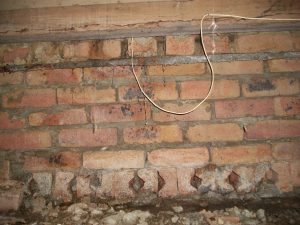
Internal look at blocked vents
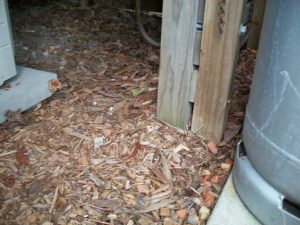
Timber in direct contact with the ground
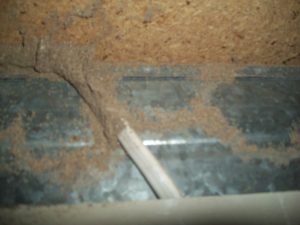
Image shows a termite lead running over a steel frame
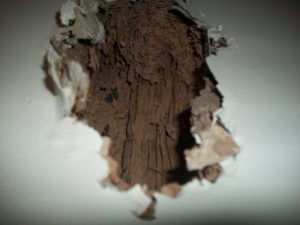
Termite damage behind the wall lining of a steel frame home
